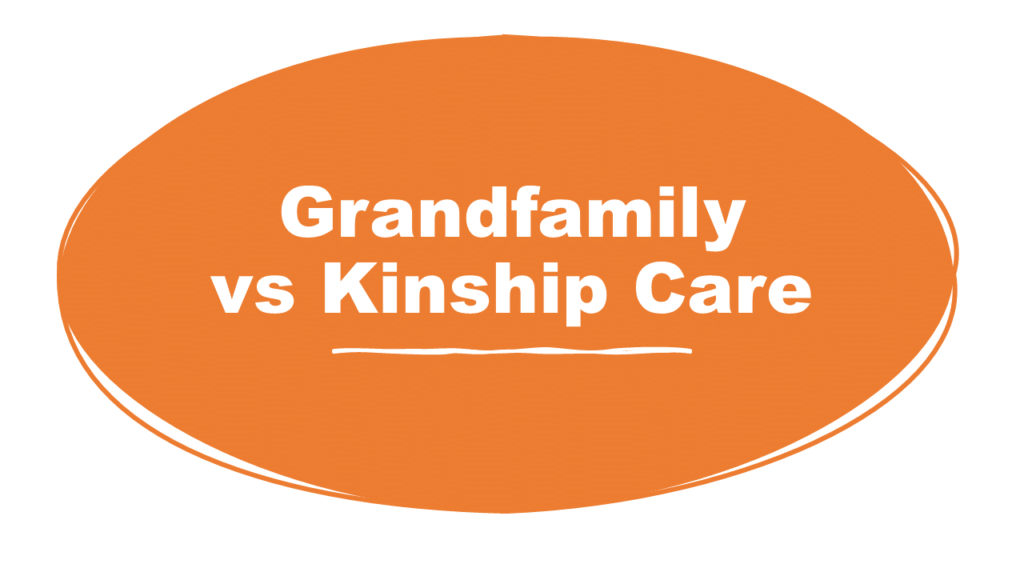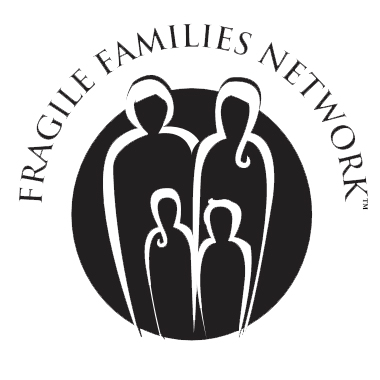Grandfamily vs. Kinship Care: Understanding the Distinctions and Broader Implications

When discussing child care arrangements where relatives step in to care for children, two terms frequently come up: grandfamily and kinship care. Although they share similarities, they also encompass distinct situations and implications. Understanding the differences between grandfamilies and kinship care is crucial for recognizing the unique needs of each and providing appropriate support.
Defining Grandfamilies and Kinship Care
Grandfamilies:
- Broad Scope: Grandfamilies are family units where grandparents or other family members (older siblings, aunts, uncles, cousins and fictive kin) take on primary caregiving roles for children. This arrangement can arise for various reasons, including the death, disability, or absence of the parents due to circumstances such as substance abuse, incarceration, or deportation.
- Legal Status: The caregiving arrangement in grandfamilies can be formal or informal. Formal arrangements involve legal custody or guardianship, while informal arrangements do not require legal intervention.
- Extended Family Involvement: While grandparents are the most common caregivers, other relatives such as aunts, uncles, and older siblings can also be primary caregivers in grandfamilies.
Kinship Care:
- Child Welfare Context: Kinship care is a subset of caregiving arrangements typically situated within the child welfare system. It involves placing children with relatives or close family friends when their biological parents are unable to care for them.
- Formalized Process: Kinship care often involves legal processes and oversight by child welfare agencies to ensure the child’s safety and well-being.
- Focused Scope: Kinship care primarily addresses the immediate needs of children removed from their parents’ custody due to neglect, abuse, or other child welfare concerns.
Key Differences Between Grandfamilies and Kinship Care
- Scope and Situations:
- Grandfamilies: Encompass a wide range of caregiving situations, including those beyond the child welfare system. They can arise from various familial or social circumstances, such as the voluntary transfer of care by parents due to personal difficulties.
- Kinship Care: Primarily focuses on situations where children are placed with relatives through the intervention of child welfare agencies due to safety concerns.
- Legal and Custodial Arrangements:
- Grandfamilies: May involve informal arrangements without legal custody or guardianship, relying on family agreements and trust. Formal arrangements can also exist, but they are not a prerequisite.
- Kinship Care: Generally involves formal legal processes, including custody or guardianship orders, and is monitored by child welfare agencies to ensure compliance with safety standards and regulations.
- Support and Services:
- Grandfamilies: Access to support and services may vary significantly depending on whether the caregiving arrangement is formal or informal. Informal grandfamilies might lack access to some resources available to formal kinship care placements.
- Kinship Care: Typically has more structured access to support services, including financial assistance, counseling, and educational resources, facilitated by child welfare agencies.
- Emotional and Social Dynamics:
- Grandfamilies: Often maintain strong emotional and social ties within the family unit, with caregiving roles emerging organically in response to family needs. These arrangements can foster a sense of continuity and stability for children.
- Kinship Care: While also fostering familial ties, kinship care arrangements may involve more formal oversight and potential disruption due to the involvement of external agencies.
Benefits and Challenges
Grandfamilies:
- Benefits:
- Emotional Security: Children benefit from the continuity and familiarity of being cared for by known family members.
- Cultural Preservation: Grandfamilies help maintain cultural and familial traditions, contributing to a child’s sense of identity and belonging.
- Flexibility: Informal arrangements can be more flexible and adaptable to the specific needs of the family.
- Challenges:
- Resource Access: Informal grandfamilies may struggle to access the same level of support and resources as formal kinship care placements.
- Legal Complications: Without legal custody or guardianship, caregivers may face challenges in making decisions for the child’s welfare, education, and healthcare.
- Financial Strain: Grandparents and other older relatives may face financial challenges, especially if they are on fixed incomes or nearing retirement.
Kinship Care:
- Benefits:
- Support Services: Kinship care placements often come with access to financial assistance, counseling, and educational resources provided by child welfare agencies.
- Safety and Oversight: The involvement of child welfare agencies ensures that children are placed in safe and nurturing environments.
- Legal Clarity: Formal custody or guardianship arrangements provide clear legal standing for caregivers, facilitating decision-making for the child’s welfare.
- Challenges:
- Bureaucracy: The formal processes involved in kinship care can be complex and time-consuming, sometimes creating delays in placement.
- Emotional Stress: The circumstances leading to kinship care placements, such as neglect or abuse, can create significant emotional stress for both children and caregivers.
- Potential Disruption: The involvement of external agencies and the legal system can sometimes disrupt family dynamics and create additional stress.
Supporting Both Grandfamilies and Kinship Care
To support grandfamilies and kinship care placements effectively, it is essential to recognize their unique needs and provide tailored resources and services:
- Access to Resources:
- Financial Assistance: Ensure that both grandfamilies and kinship care placements have access to financial support, including subsidies, grants, and tax benefits.
- Healthcare and Counseling: Provide comprehensive healthcare services and mental health support to address the needs of both caregivers and children.
- Legal Aid and Advocacy:
- Legal Support: Offer legal assistance to help grandfamilies and kinship caregivers navigate custody, guardianship, and other legal issues.
- Policy Advocacy: Advocate for policies that recognize and support the diverse needs of grandfamilies and kinship care placements.
- Education and Training:
- Caregiver Training: Develop training programs for caregivers that cover child development, trauma-informed care, and navigating the child welfare system.
- Professional Training: Train professionals across various sectors to understand and address the specific needs of grandfamilies and kinship care placements.
- Community and Social Support:
- Support Networks: Establish support networks and community programs that provide emotional, social, and practical support to grandfamilies and kinship caregivers.
- Intergenerational Activities: Promote activities that strengthen family bonds and encourage intergenerational learning and support.
Understanding the distinctions between grandfamilies and kinship care is crucial for providing effective support to these unique family arrangements. While both involve relatives caring for children, grandfamilies encompass a broader range of situations beyond the child welfare system. By recognizing the specific needs and challenges of grandfamilies and kinship care placements, we can ensure that both receive the tailored support and resources they need to thrive. Through comprehensive support, legal aid, education, and community programs, we can promote the well-being and resilience of these vital family units.
©2024 Fragile Families NETWORK







